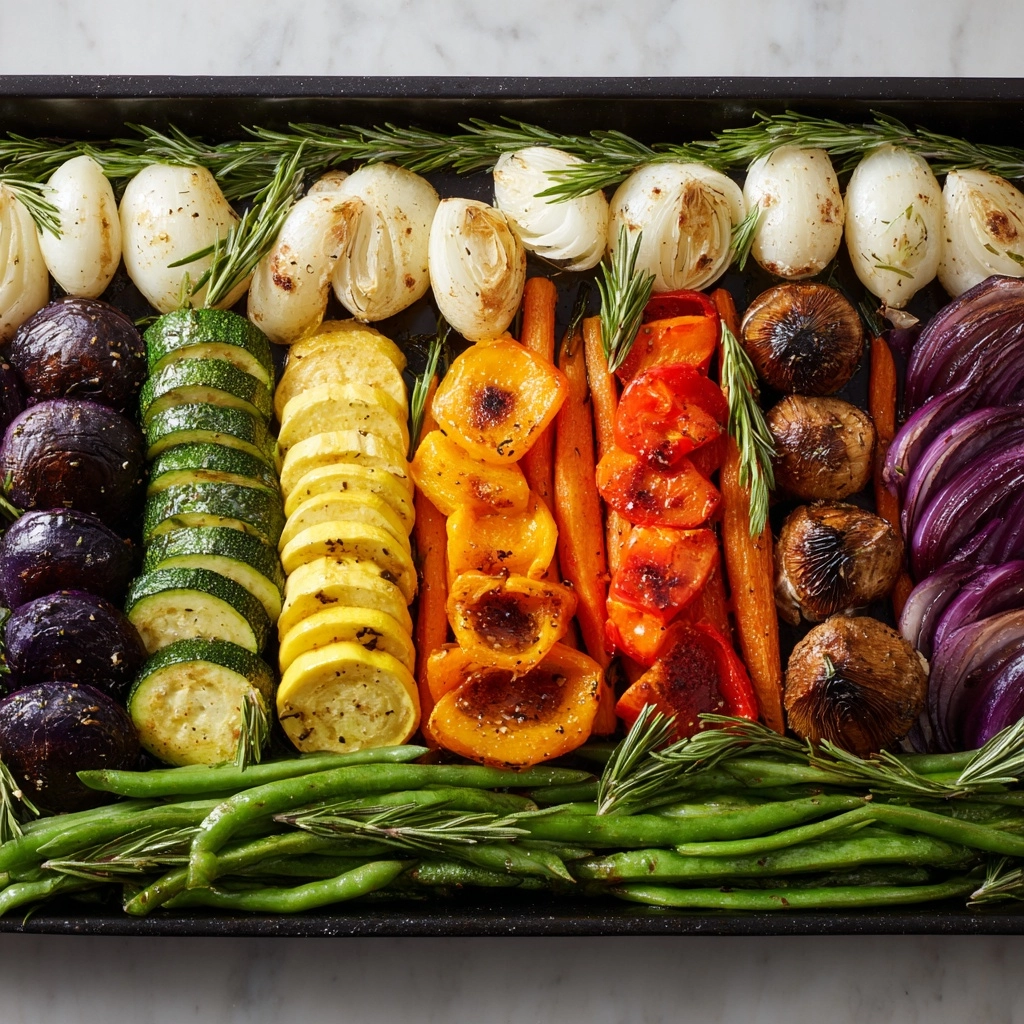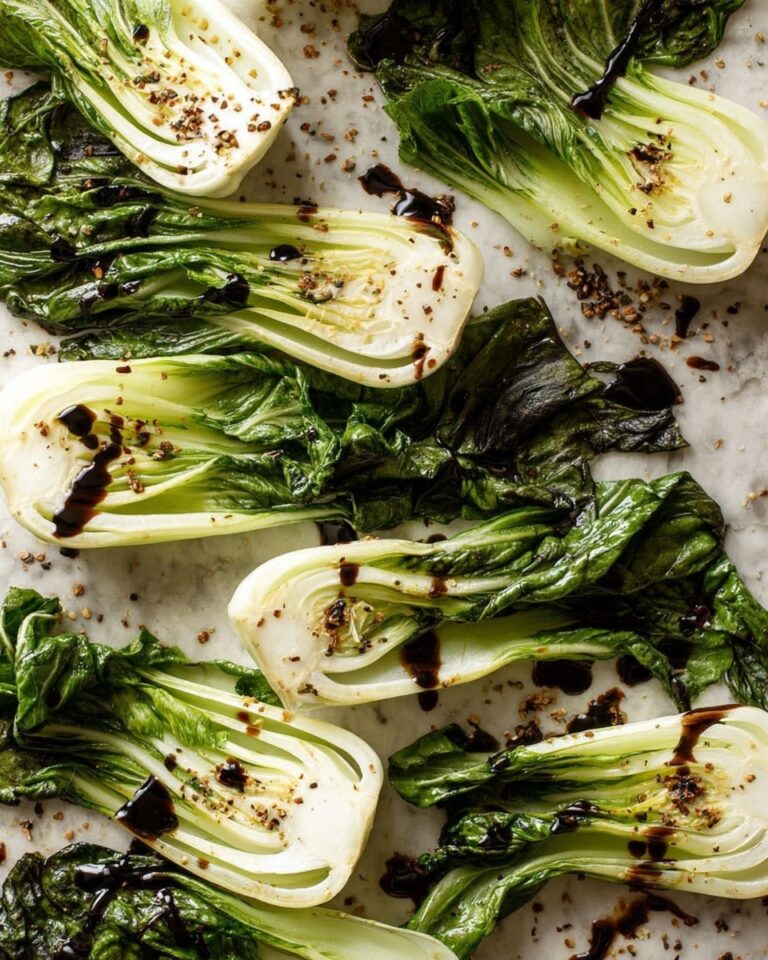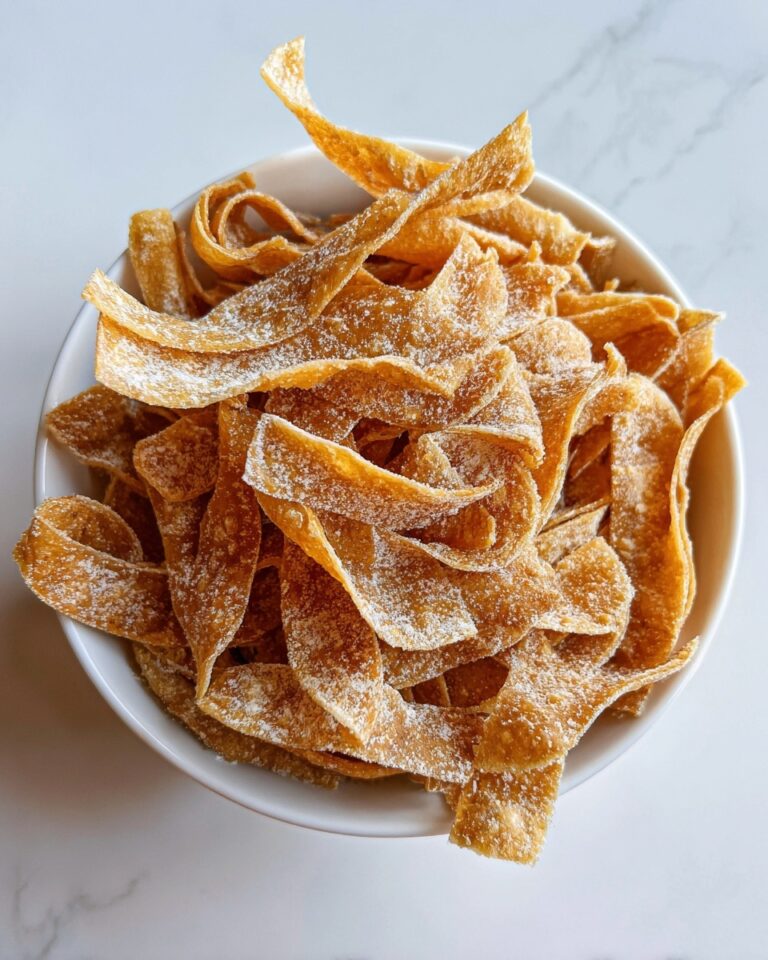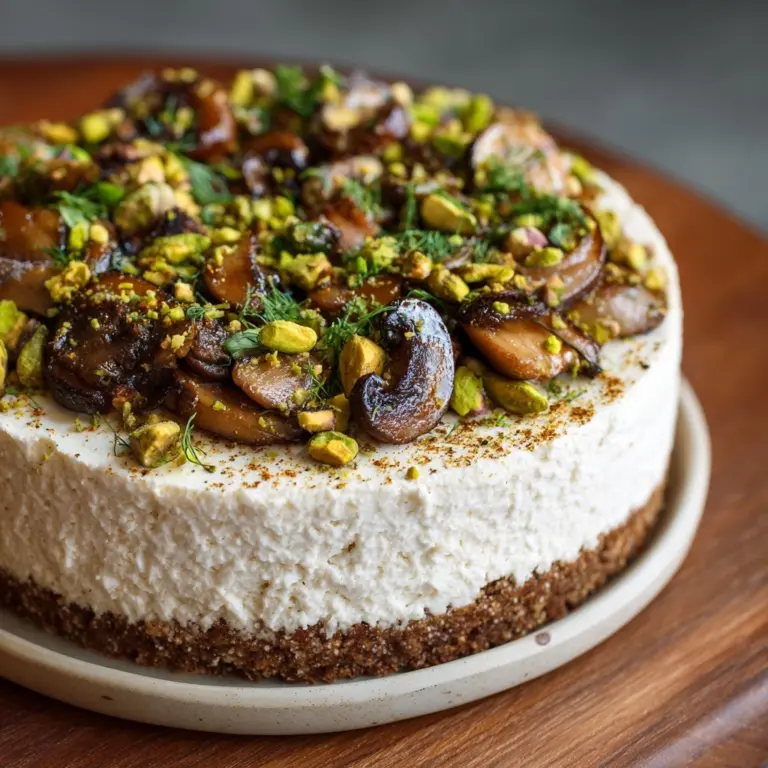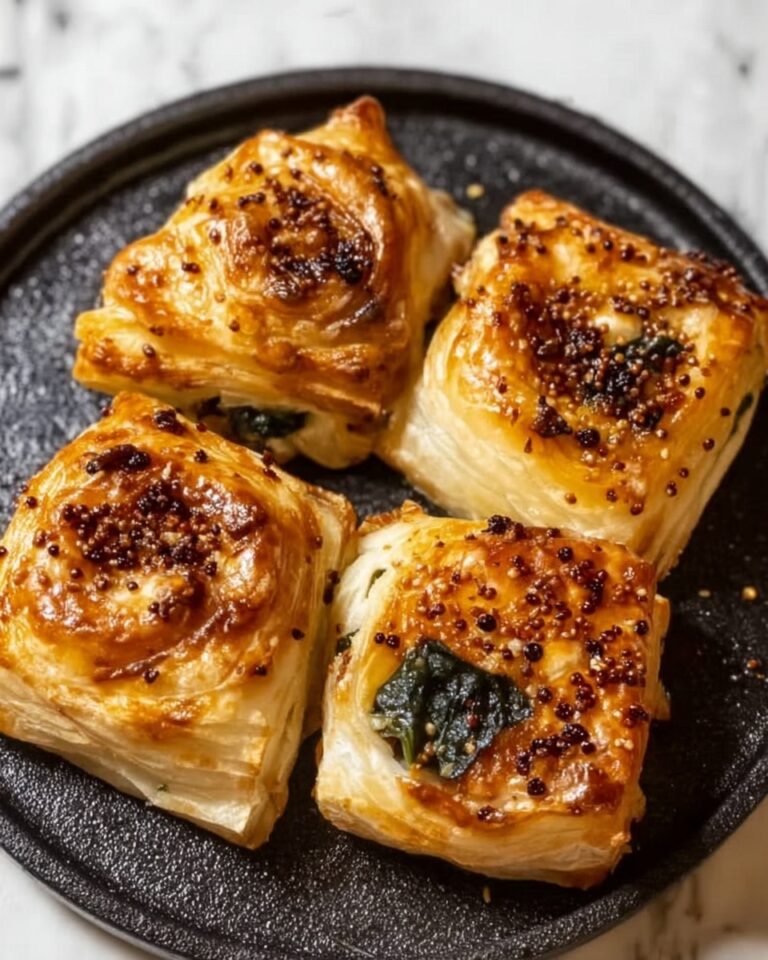Colorful, bursting with Mediterranean flavors, and delightfully healthy, this Roasted Vegetable Antipasto brings together caramelized veggies and bold accents like olives and artichoke hearts in a dish that’s truly greater than the sum of its parts. Whether you’re hosting a summer get-together or simply looking to transform humble vegetables into something special, this appetizer is a crowd-pleaser that happens to be vegan, gluten-free, and both gorgeous and satisfying. Roasted Vegetable Antipasto shines as part of an appetizer spread, a picnic platter, or even as a light lunch, delivering the perfect balance of savory, tangy, and herby notes every single time.
Ingredients You’ll Need
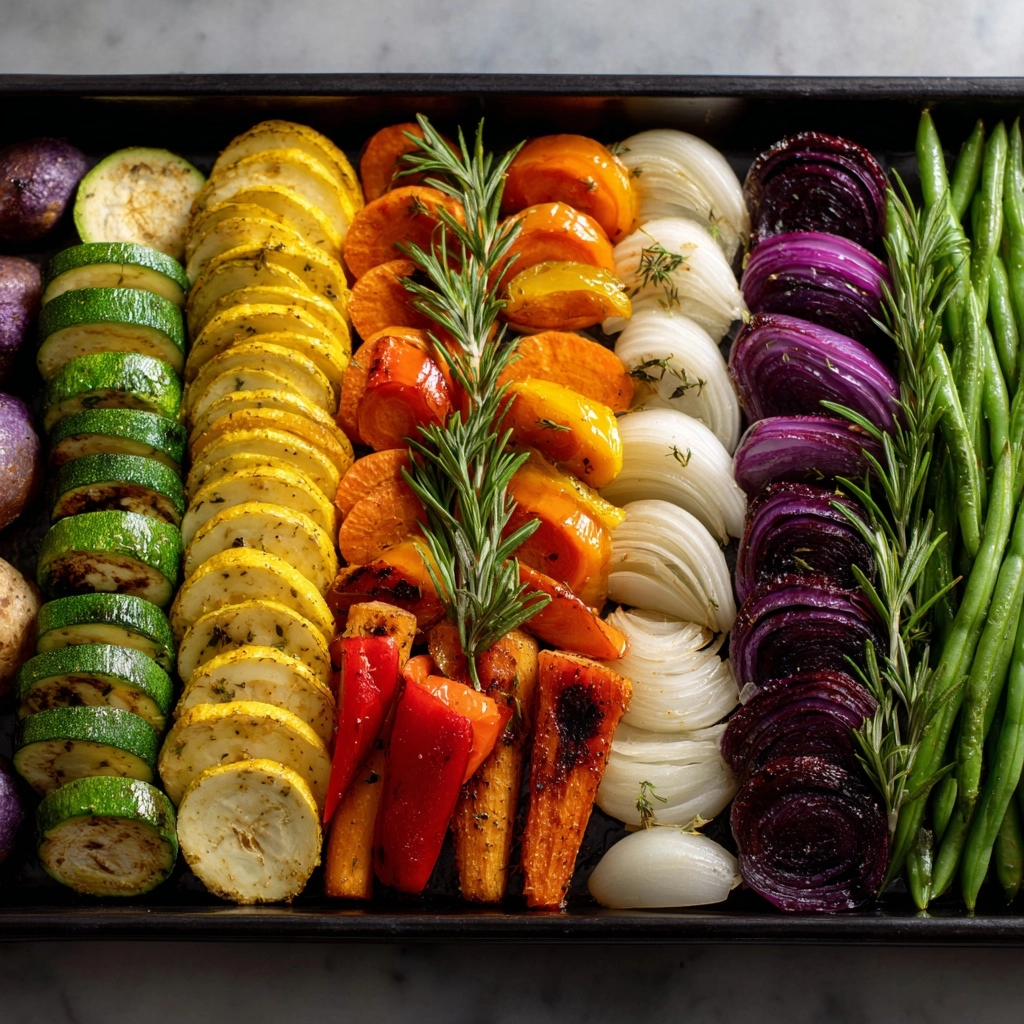
Ingredients You’ll Need
The beauty of Roasted Vegetable Antipasto lies in its simplicity: each ingredient has a role to play, from adding sweet and smoky notes to creating irresistible color and texture on your platter. Don’t skip any—these are the essentials that make this antipasto sing!
- Eggplant: Absorbs flavors and turns meltingly tender after roasting for a hearty backbone.
- Zucchini: Offers mild, buttery sweetness and a soft bite that balances the richer veggies.
- Red Bell Pepper: Adds bursts of color and a gentle sweetness—perfect for visual appeal and zing.
- Yellow Bell Pepper: Balances the red with mellow flavor and sunny color for even more vibrancy.
- Red Onion: Roasts up sweet and caramelized, lending subtle depth to the whole antipasto.
- Cherry Tomatoes: Their juicy pops add a fresh, tangy contrast to the roasted elements.
- Olive Oil: Ensures everything roasts into tender, golden perfection and adds a fruity richness.
- Balsamic Vinegar: A splash before roasting infuses the veggies with nuanced tang and gentle sweetness.
- Garlic: Just enough to evoke that signature Mediterranean aroma and subtle bite.
- Dried Oregano: Brings a classic Italian herbal note to tie all the veggies together.
- Salt: Essential for bringing out each vegetable’s natural flavor during roasting.
- Black Pepper: Adds gentle heat and rounds out the seasoning.
- Fresh Basil Leaves: Torn and added after roasting, for brightness and aromatic finish.
- Marinated Artichoke Hearts: A tangy, savory treat tucked among the roasted veggies for extra oomph.
- Kalamata Olives: Their briny, robust bite contrasts beautifully with the sweetness of the vegetables.
How to Make Roasted Vegetable Antipasto
Step 1: Prep the Oven and Baking Sheet
Start by preheating your oven to 425°F (220°C)—you want it nice and hot for those veggies to caramelize. Line a large baking sheet with parchment paper; this keeps clean-up easy and prevents sticking. Giving everything plenty of space is the key to evenly roasted, slightly crisped veggies.
Step 2: Toss the Vegetables
In a large bowl, combine the eggplant, zucchini, red and yellow bell peppers, red onion, and cherry tomatoes. Drizzle them all generously with the olive oil and balsamic vinegar, then toss in the minced garlic, dried oregano, salt, and black pepper. Give everything a good turn with your hands or a big spoon, making sure every piece is coated in that gorgeous, glossy marinade.
Step 3: Spread and Roast
Spread the vegetables out onto your prepared baking sheet. For the signature Roasted Vegetable Antipasto flavor and texture, make sure they’re in a single, even layer—crowding traps steam and keeps the veggies from browning. Roast in the hot oven for 25 to 30 minutes, giving the pan a stir halfway through. Your kitchen will fill with an irresistible aroma as the veggies tenderize and caramelize around the edges.
Step 4: Let Cool and Assemble
Once the vegetables are golden and just starting to char at the edges, remove the baking sheet from the oven. Let everything cool for about 10 minutes—this helps the flavors meld and makes the veggies easier to handle. Gently transfer the roasted vegetables to a large serving dish or platter.
Step 5: Add Final Touches and Serve
Now, gently fold in the fresh basil, artichoke hearts, and Kalamata olives. Their fresh, briny, and herbal notes will brighten the roasted vegetables beautifully. You can serve the Roasted Vegetable Antipasto warm for a cozy starter, or let it come to room temperature for a fuss-free, make-ahead option.
How to Serve Roasted Vegetable Antipasto
Garnishes
For a little extra flair, garnish your Roasted Vegetable Antipasto with an extra shower of torn basil, a few sprigs of flat-leaf parsley, or a handful of toasted pine nuts for some crunch. A light drizzle of extra-virgin olive oil across the finished dish adds gorgeous gloss and even more Mediterranean flavor.
Side Dishes
This antipasto loves company! Serve it alongside crusty baguette slices, grilled sourdough, or crackers to soak up all those savory juices. If you want to go all out, pair it with a creamy wedge of ricotta, a platter of assorted Italian cheeses, or a refreshing green salad—the possibilities are endless.
Creative Ways to Present
Think outside the platter: pile the Roasted Vegetable Antipasto high on grilled bread for an open-faced bruschetta, spoon it over warm farro or quinoa for a hearty vegetarian bowl, or arrange it as a rainbow-layered appetizer board. Hosting a picnic? Pack it in little jars for portable, individual servings.
Make Ahead and Storage
Storing Leftovers
Store any leftover Roasted Vegetable Antipasto in an airtight container in the refrigerator for up to three days. The flavors deepen as they mingle, making it even tastier the next day. Just be sure to let it come up to room temperature for the best taste and texture before serving again.
Freezing
While you technically can freeze Roasted Vegetable Antipasto, the texture of some vegetables—especially zucchini and eggplant—may soften considerably once thawed. It’s best enjoyed fresh or from the fridge, but if you do freeze, store in a well-sealed container for up to a month.
Reheating
If you want to serve leftovers warm, simply spread the antipasto on a baking sheet and heat in a 350°F (175°C) oven for about 10 minutes. Alternatively, a quick zap in the microwave works, but go slowly to avoid soggy veggies. Always finish with fresh herbs after reheating to brighten things back up.
FAQs
Can this Roasted Vegetable Antipasto be made in advance?
Absolutely! In fact, making it a day ahead allows the flavors to develop even further. Just store it covered in the refrigerator and let it come to room temperature before serving for the best experience.
What other vegetables can I use in Roasted Vegetable Antipasto?
You can easily customize with seasonal veggies like asparagus, mushrooms, or fennel—just keep everything chopped to similar sizes for even roasting and stick to vegetables that caramelize well.
Is this recipe suitable for vegans and those with gluten allergies?
Yes, this Roasted Vegetable Antipasto is naturally vegan and gluten-free! Just double-check any jarred ingredients like artichoke hearts or olives for potential additives if allergies are a concern.
How can I add extra protein to this antipasto?
For a heartier version, add drained and rinsed chickpeas, crumbled feta, or mozzarella pearls. All are delicious with the robust roasted veggies and keep with the Mediterranean vibe.
Can I serve Roasted Vegetable Antipasto hot or cold?
You can serve it either way! It’s lovely warm right after roasting, but just as irresistible at room temperature—which also makes it super convenient for parties and meal prep.
Final Thoughts
Roasted Vegetable Antipasto is one of those vibrant, effortless dishes that bring everyone around the table with smiles and second helpings. I hope you fall in love with its ease and customizable character—try it for your next gathering or a special weeknight treat. Enjoy every savory, colorful bite!
Print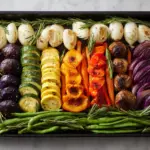
Roasted Vegetable Antipasto Recipe
- Prep Time: 15 minutes
- Cook Time: 30 minutes
- Total Time: 45 minutes
- Yield: 6 servings
- Category: Appetizer
- Method: Roasting
- Cuisine: Italian
- Diet: Vegan, Gluten-Free
Description
Enjoy a delightful Italian-inspired appetizer with this Roasted Vegetable Antipasto. Bursting with flavors from roasted eggplant, zucchini, bell peppers, onion, cherry tomatoes, and more, this vegan and gluten-free dish is perfect for entertaining or as a healthy snack.
Ingredients
Eggplant:
- 1 medium eggplant, cut into 1-inch cubes
Zucchinis:
- 2 medium zucchinis, sliced into ½-inch rounds
Bell Peppers:
- 1 red bell pepper, cut into 1-inch pieces
- 1 yellow bell pepper, cut into 1-inch pieces
Red Onion:
- 1 red onion, cut into wedges
Cherry Tomatoes:
- 8 oz cherry tomatoes
Others:
- 3 tablespoons olive oil
- 1 tablespoon balsamic vinegar
- 2 garlic cloves, minced
- 1 teaspoon dried oregano
- ½ teaspoon salt
- ¼ teaspoon black pepper
- ¼ cup fresh basil leaves, torn
- ¼ cup marinated artichoke hearts, drained and halved
- ¼ cup Kalamata olives, pitted
Instructions
- Preheat the oven: Preheat the oven to 425°F (220°C) and line a large baking sheet with parchment paper.
- Toss vegetables: In a large bowl, toss eggplant, zucchinis, bell peppers, onion, and cherry tomatoes with olive oil, balsamic vinegar, garlic, oregano, salt, and black pepper until coated.
- Roast: Spread the vegetables on the baking sheet, roast for 25-30 minutes, stirring halfway, until tender.
- Cool and mix: Let the roasted vegetables cool for 10 minutes, then transfer to a serving dish. Mix in basil, artichoke hearts, and olives.
- Serve: Serve warm or at room temperature.
Notes
- This antipasto can be made a day ahead and stored in the refrigerator. Let it come to room temperature before serving.
- Add crumbled feta or mozzarella pearls for extra richness.
Nutrition
- Serving Size: 1 cup
- Calories: 160
- Sugar: 6 g
- Sodium: 320 mg
- Fat: 11 g
- Saturated Fat: 1.5 g
- Unsaturated Fat: 9 g
- Trans Fat: 0 g
- Carbohydrates: 13 g
- Fiber: 4 g
- Protein: 3 g
- Cholesterol: 0 mg

